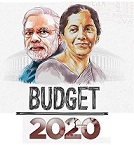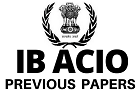sponsored links
When people buy diamond jewellery, they often want to convey love or
commitment to someone dear and special. But, this jewellery, if it contains
diamonds from Sierra Leone and Angola diamond mines in West Africa, could have
a bloody past signifying mistreatment and abuse. The movie, Blood Diamond,
traces the path of a large pink diamond found in Sierra Leone in the 1990’s by
a fisherman working as a slave in a rebel-controlled diamond mine. That diamond
changed and ended many lives and the story of that stone carries a strong
social message. The story design is an interesting fictionbut it is based
upon real life events. The movie sensitises the audience on how a mineral
resource canfuel oppression
and the slaughter of thousands of people. This is not a first time phenomenon. It has happened before in Africa with
ivory and gold.
What Are ‘Conflict Diamonds’ ?
 Blood Diamonds, also known as ‘Conflict Diamonds’ are stones that are
produced in areas controlled by rebel forces namely the Revolutionary United
Front (RUF) that are opposed to internationally recognized
governments. The rebels sell these rough diamonds, and the money is used to
purchase arms or to fund their military actions. Blood Diamonds are often
produced through the forced labour of men, women and children. They are also
stolen during shipment or seized by attacking the mining operations of
legitimate producers. These attacks can be on the scale of a large military
operation. The stones are then smuggled into the international diamond trade
and sold as legitimate gems. These diamonds are often the main source of funds
for the rebels. Enormous amounts of money are at stake and bribes, threats,
torture and murder are modes of operation. The profits made from the sale of
these diamonds are used to fund terrorism and civil war. This is why the term
‘blood diamonds’ is used.
Blood Diamonds, also known as ‘Conflict Diamonds’ are stones that are
produced in areas controlled by rebel forces namely the Revolutionary United
Front (RUF) that are opposed to internationally recognized
governments. The rebels sell these rough diamonds, and the money is used to
purchase arms or to fund their military actions. Blood Diamonds are often
produced through the forced labour of men, women and children. They are also
stolen during shipment or seized by attacking the mining operations of
legitimate producers. These attacks can be on the scale of a large military
operation. The stones are then smuggled into the international diamond trade
and sold as legitimate gems. These diamonds are often the main source of funds
for the rebels. Enormous amounts of money are at stake and bribes, threats,
torture and murder are modes of operation. The profits made from the sale of
these diamonds are used to fund terrorism and civil war. This is why the term
‘blood diamonds’ is used.
In the aftermath of horrific abuses committed by West African rebel
groups enriched by diamond wealth, an international body backed by the United
Nations (the Kimberley Process Certification Scheme) was founded to ensure that
traders and consumers could identify blood diamonds and prevent their trade.
The flow of ‘Conflict Diamonds’ has originated mainly from Sierra Leone,
Angola, Democratic Republic of Congo, Liberia and Ivory Coast. The United
Nations and other groups such as Global Witness and Partnership Africa Canada
are working to block the entry of conflict diamonds into the worldwide diamond
trade.
Their approach has been to develop a government certification procedure
known as the ‘Kimberley Process’. This procedure requires each nation to
certify that all rough diamond exports are produced through legitimate mining
and sales activity. Diamonds exported from these nations are to be accompanied
by certificates. These certificates state that the diamonds were produced, sold
and exported through legitimate channels. The certification process accounts
for all rough diamonds, through every step of their movement, from mine to
retail sale. Most consumers do not realize that they may be purchasing blood
diamonds–even in 2010. The Amnesty International survey found that 83 per cent
of U.S. Jewellers say their customers “rarely or never” inquire about the
source of diamonds. Retail customers buying a cut diamond are encouraged to insist
upon a sales receipt document stating that their diamond originated from a
conflict free source.
Nations who agree to participate in the Kimberley Process are not
permitted to trade with non-member Nations. The Kimberley Process is believed
to have significantly reduced the number of ‘Conflict Diamonds’ that are
reaching the international gem markets. Today 71 governments and several
non-government organizations abide by the Kimberley Process. The World
Diamond Council estimates that 99% of all diamonds are now conflict free.
However, despite implementation of the Kimberley Process, blood diamonds
still exist and are entering the legitimate trade. Although the scheme makes it
more difficult for diamonds from rebel-held areas to reach international markets,
there are still significant weaknesses in the scheme that undermine its
effectiveness. A United Nations Group of Experts has recently found that poor
controls are allowing significant volumes of blood diamonds to enter the
legitimate trade through Ghana, where they are being certified as conflict
free. International trading centres need to introduce better systems for
identifying suspicious shipments of rough diamonds. Many other
diamond-producing countries have weak government controls that cannot guarantee
that the diamonds they export are conflict-free.
1. What action have
the U.N. and other international groups taken to block the entry of ‘Conflict
Diamonds’ into the diamond trade ?
(a) They have
introduced a certification procedure known as the ‘Kimberley Process’.
(b) They are
fighting against the rebel groups to obtain autonomy of the diamond mines.
(c) They have
stopped importing diamonds from West Africa.
(A) Only (a) and (c)
(B) Only (b) and (c)
(C) Only (a)
(D) Only (b)
(E) All (a), (b)
and (c)
2. What should be
the role of the consumer in avoiding the purchase of ‘Conflict Diamonds’ ?
(A) Consumers
should not buy diamonds from Africa
(B) Consumers
should refrain from wearing all diamond jewellery
(C) Consumers
should switch to other precious gems
(D) Consumers need
not worry as 99% of the diamonds sold are conflict free
(E) Consumers
should always insist on the source of the diamonds
3. Which of the
following is not true of the ‘Kimberley Process’ as given
in the passage ?
(A) Certification
of all rough diamond exports by legitimate mining and sales activity
(B) To help
consumers identify blood diamonds and prevent their trade
(C) To campaign for
the sale of ‘Conflict Diamonds’
(D) To trade
diamonds only with participant member nations
(E) To increase the
number of conflict free diamonds entering the world of diamond trade
4. The movie ‘Blood Diamond’ is a
reflection of ……….
(A) The lives of fishermen in Sierra Leone
(B) Diamonds that originated from mines under the control
of rebel groups
(C) A happy story of how diamonds have changed the lives
of the poor
(D) Only (B) and (C)
(E) Only (A) and (C)
5. What are some of the weaknesses of the Kimberley
certification process as underlined by the author ?
(A) Weak government controls and suspicious shipment of
rough diamonds
(B) Lengthy procedures to be followed in order to acquire
the certification
(C) Ability to trade only with non-member nations
(D) Only (A) and (B)
(E) Only (A) and (C)
6. Why are the diamonds that are mined in Sierra Leone
called ‘Blood Diamonds’ ?
(A) The diamond stones are smuggled into the international
diamond trade
(B) It is sold to finance terrorism and other violent acts
including civil war
(C) The rough diamonds are red in colour
(D) The diamonds obtained from Sierra Leone signify
freedom
(E) Only (B) and (D)
7. How does the diamond trade help the Revolutionary
United Front (RUF) rebel group ?
(A) The RUF use the profits made from mined diamonds to
fund and buy weapons for their army
(B) The diamond trade helps the families of the rebel
groups
(C) The profit made by the diamond trade is used to
finance their education
(D) The diamond trade is the only source of finance for
the RUF rebels
(E) The RUF rebel group has complete monopoly over the
diamond trade in Sierra Leone
8. The flow of conflict diamonds has originated from ……….
(A) Russia
(B) Africa
(C) America
(D) South Asia
(E) None of these
9. What are the benefits of the introduction of the
‘Kimberley Process’ ?
(a) Helps reduce the number of conflict diamonds reaching
the International gem markets.
(b) Provides an international certification scheme to
ensure that the diamonds are conflict free.
(c) Involved in legitimising the process of the diamond
trade.
(A) Only (a)
(B) Only (b)
(C) Only (c)
(D) Only (a) and (c)
(E) All (a), (b) and (c)
Directions—(Q. 10–12) Choose the
word/group of words which is most
similar in meaning to the word printed in bold as used in the
passage.
10. Abide
by
(A) Comprehend
(B) Tolerate
(C) Agree to
(D) Bid on
(E) Swear by
11. Phenomenon
(A) Occasion
(B) Event
(C) Undertaking
(D) Disaster
(E) Trend
12. Fuel(A) Increase
(B) Substitute
(C) Energise
(D) Contribute
(E) Involve
Directions—(Q. 13–15) Choose the
word/group of words which is most
opposite in meaning to the word printed in bold as used in the
passage.
13. Legitimate
(A) Safe
(B) Risky
(C) Unlawful
(D) Reasonable
(E) Warranted
14. Fiction
(A) Imagination
(B) Fact
(C) Narration
(D) Fantasy
(E) Plot
15. Opposed
(A) Supported
(B) Repelled
(C) Contradicted
(D) Disparate
(E) Distinct
Directions—(Q. 16–20) Read each sentence
to find out whether there is any grammatical error in it. The error if any,
will be in one part of the sentence. The letter of that part is the answer. If
there is no error, the answer is (E) i.e. “No error”. (Ignore error of
punctuation, if any.)
16. The youth (A) / did not dare (B) / to venture with the
sea (C) / as it was high tide. (D) No error (E)
17. A young sales manager (A) / who is about to resign his
job (B) / despite his success (C) / in the organization. (D) No error (E)
18. The difference between successful person (A) / and
others is not (B) / lack of knowledge (C) / but a lack of will. (D) No error
(E)
19. After my interview (A) / by the selection panel (B) /
I was waiting for a response (C) / but they did not revert back. (D) No error
(E)
20. The teacher uses anecdotes (A) / to help her students
(B) / relate better (C) / to the subjects taught in class. (D) No error (E)
Directions—(Q. 21–25) Which of the phrases
(A), (B), (C) and (D) given below each sentence should replace the word/phrase
in bold in the sentence
to make it grammatically correct. If the sentence is correct as it is given and
no correction is required, mark (E) as the answer.
21. The industrialisation process underwent a sea change during the 19th
century.
(A) A sea of change
(B) A sea changes
(C) A sea changed
(D) At sea change
(E) No correction required
22. The solution to my problem is a long-term one which
can only be tackle by official
agencies.
(A) Only is tackle
(B) Only be tackled
(C) Only tackle
(D) Tackle
(E) No correction is required
23. The employer wanted to strike balance between
withholding his position and getting into a rapid exchange of opinions.
(A) Strike a balance
(B) Striking balance
(C) Have stroked a balance
(D) Have strike a balance
(E) No correction required
24. The students of the football team engaged in playing fairly.
(A) Playing fair
(B) Fair play
(C) Fairness play
(D) Fairness
(E) No correction required
25. As good
luck will have it, it did not rain on the day of the wedding.
(A) Good luck has it
(B) Good luck having
(C) Good luck have it
(D) Good luck would have it
(E) No correction required
Directions—(Q. 26–30) In each question
below, a sentence with four words printed in bold type is given.
These are lettered as (A), (B), (C) and (D). One of these four words printed in bold may be either wrongly spelt or inappropriate in the context of
the sentence. Find out the word which is wrongly spelt or inappropriate, if
any. The letter of that word is your answer. If all the words printed inbold are correctly
spelt and also appropriate in the context of the sentence, mark (E) i.e. ‘All
correct’ as your answer.
26. The manager complamented (A) her team for meeting (B)
targets and performing (C) withexcellence. (D) All correct
(E)
27. The ongoing conflict bought (A) up
information and insights (B) that would
have to be digested(C) by both parties (D) at a
later time. All correct (E)
28. There are a number of factors (A) which render (B) a country
suitable or insuitable (C) for
the rapid development of commercial (D) aviation. All
correct (E)
29. The woman gave the begger (A) a big sum (B) of money to
show him her caring (C) andconcern. (D) All correct
(E)
30. The best way of a attracting (A) someone’s
rapt attention (B) is to give
them the rareexperience (C) of being
fully herd. (D) All correct
(E)
Directions—(Q. 31–35) Pick out most
effective word from the given words to fill in the blanks to make the sentence
meaningfully complete in the context of the sentence.
31. A mixed economy implies the ……… of a state enterprise
and free enterprise, and cannot mean a wholly state-dominated economy.
(A) juxtaposition
(B) existence
(C) collation
(D) harmony
(E) co-existence
32. Government spokesmen always assure us that ideology
plays no part in their economic policies, but the evidence to the contrary is
……….
(A) negligible
(B) understandable
(C) reasonable
(D) commendable
(E) overwhelming
33. The interests of the nation as a ……… must prevail over
the interests of the few.
(A) section
(B) whole
(C) part
(D) society
(E) unit
34. The murderer appeared to be tongue-tied and ……… when
it was his turn to speak.
(A) detailed
(B) shy
(C) talkative
(D) exhaustive
(E) inarticulate
35. It helps to do some ……… work before giving a
competitive examination.
(A) sorting
(B) organised
(C) preparatory
(D) relaxed
(E) strenuous
Directions— (Q. 36–40) Rearrange the
following five sentences I, II, III, IV and V in the proper sequence to form a
meaningful paragraph; then answer the questions given below them.
I. With this continuous intervention, it is expected that
BBS programmes will not only improve safety performance but will also have a
positive effect on fuel consumption and other related costs.
II. This influence is not intended to be a one-off
exercise, but it and BBS should rather become a continuous effort by every
transport company.
III. Finally, in the long run it will improve the total
cost-effectiveness of the transport companies.
IV. Behaviour Based Safety (BBS) is a programme that aims
at increasing safety during road freight transport by positively influencing
the behaviour of drivers.
V. This is based on the assumption that, the behaviour of
drivers can be influenced through observation, coaching and communication.
36. Which of the following will be the SECOND sentence after
rearrangement ?
(A) V
(B) IV
(C) III
(D) II
(E) I
37. Which of the following will be the FOURTH sentence after
rearrangement ?
(A) I
(B) II
(C) III
(D) IV
(E) V
38. Which of the following will be the FIRST sentence after
rearrangement ?
(A) I
(B) II
(C) III
(D) IV
(E) V
39. Which of the following will be the THIRD sentence after
rearrangement ?
(A) V
(B) IV
(C) II
(D) III
(E) I
40. Which of the following will be the FIFTH (LAST) sentence after
rearrangement ?
(A) I
(B) II
(C) III
(D) IV
(E) V










 English Vocabulary from
English Vocabulary from











in 18 th question , answer should be D i guess,, please check
ReplyDeleteThe given answer is correct Disha, the option should be "A lack of Knowledge" instead of "lack of knowledge"
Deletethanks you
ReplyDelete